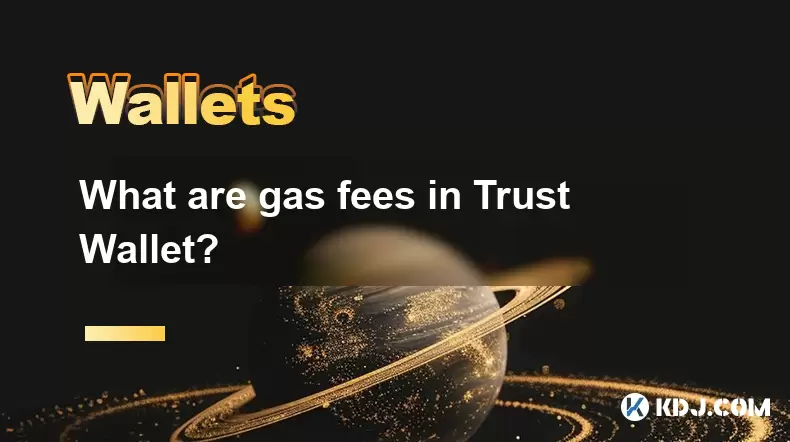-
 Bitcoin
Bitcoin $114400
1.32% -
 Ethereum
Ethereum $3499
2.20% -
 XRP
XRP $2.922
4.26% -
 Tether USDt
Tether USDt $0.0000
0.03% -
 BNB
BNB $752.6
1.53% -
 Solana
Solana $161.8
1.64% -
 USDC
USDC $0.9999
0.01% -
 TRON
TRON $0.3267
1.32% -
 Dogecoin
Dogecoin $0.1991
3.02% -
 Cardano
Cardano $0.7251
3.29% -
 Hyperliquid
Hyperliquid $38.32
3.36% -
 Stellar
Stellar $0.3972
7.58% -
 Sui
Sui $3.437
2.74% -
 Chainlink
Chainlink $16.29
3.65% -
 Bitcoin Cash
Bitcoin Cash $545.3
3.70% -
 Hedera
Hedera $0.2482
7.49% -
 Ethena USDe
Ethena USDe $1.001
0.03% -
 Avalanche
Avalanche $21.40
2.02% -
 Toncoin
Toncoin $3.579
1.56% -
 Litecoin
Litecoin $109.3
2.20% -
 UNUS SED LEO
UNUS SED LEO $8.951
-0.18% -
 Shiba Inu
Shiba Inu $0.00001220
2.75% -
 Polkadot
Polkadot $3.613
2.99% -
 Uniswap
Uniswap $9.173
3.78% -
 Monero
Monero $302.6
2.62% -
 Dai
Dai $0.0000
0.00% -
 Bitget Token
Bitget Token $4.320
1.52% -
 Pepe
Pepe $0.00001048
3.40% -
 Cronos
Cronos $0.1314
4.33% -
 Aave
Aave $259.4
3.54%
How to track market trends with Coinbase Wallet?
Coinbase Wallet helps you track market trends with features like price charts, alerts, and market sentiment analysis, keeping you informed on cryptocurrency performance.
Apr 25, 2025 at 06:14 am

Coinbase Wallet is a versatile tool that not only allows you to manage your cryptocurrencies but also provides features to help you track market trends effectively. By understanding how to leverage these features, you can make more informed decisions about your investments. This article will guide you through the process of using Coinbase Wallet to monitor market trends, ensuring you stay ahead in the dynamic world of cryptocurrencies.
Understanding Coinbase Wallet's Interface
Before diving into tracking market trends, it's essential to familiarize yourself with the Coinbase Wallet interface. Upon opening the app, you'll see a dashboard that displays your portfolio's current value and a list of your assets. The "Explore" tab is particularly useful for tracking market trends, as it provides access to a wide range of cryptocurrencies and their current market data.
Accessing Market Data
To start tracking market trends, navigate to the Explore tab. Here, you'll find a list of cryptocurrencies, along with their current prices, 24-hour price changes, and market capitalization. This section is crucial for understanding the overall market sentiment and identifying which assets are performing well or poorly.
- Tap on any cryptocurrency to view more detailed information, including price charts, trading volume, and historical data.
- Use the search function to quickly find specific cryptocurrencies you're interested in tracking.
Utilizing Price Charts
Price charts are a fundamental tool for tracking market trends. Coinbase Wallet offers various chart types, such as line charts and candlestick charts, which can help you analyze price movements over different time frames.
- Select a cryptocurrency and tap on the "Chart" tab to view its price chart.
- Choose the time frame you want to analyze, ranging from 1 day to 1 year, to get a comprehensive view of the asset's performance.
- Zoom in and out on the chart to focus on specific periods of interest, helping you identify patterns and trends.
Setting Up Price Alerts
Price alerts are an excellent way to stay updated on market trends without constantly monitoring the app. Coinbase Wallet allows you to set up alerts for specific price thresholds, ensuring you're notified when a cryptocurrency reaches a certain value.
- Navigate to the cryptocurrency you want to set an alert for and tap on the "Alerts" tab.
- Enter the desired price threshold and choose whether you want to be notified when the price goes above or below that level.
- Confirm the alert, and you'll receive a notification when the price hits the specified threshold, helping you react quickly to market changes.
Analyzing Market Sentiment
Market sentiment is a critical factor in tracking market trends. Coinbase Wallet provides insights into market sentiment through various indicators, such as social media sentiment and trading volume.
- Check the "News" section within the app to stay informed about the latest developments and announcements that could impact market sentiment.
- Monitor trading volume for different cryptocurrencies, as high volume often indicates strong market interest and potential price movements.
Using Portfolio Performance to Track Trends
Your portfolio's performance can also serve as an indicator of market trends. By regularly reviewing your portfolio's value and the performance of individual assets, you can gain insights into which sectors of the market are thriving or struggling.
- View your portfolio on the main dashboard to see the overall value and the performance of each asset.
- Analyze the percentage changes in your assets' values to identify trends and adjust your investment strategy accordingly.
Integrating with External Tools
While Coinbase Wallet provides robust features for tracking market trends, integrating it with external tools can enhance your analysis. Many users find it beneficial to use third-party platforms for more advanced charting and technical analysis.
- Export your transaction history from Coinbase Wallet to use with external analysis tools.
- Consider using APIs to pull real-time data from Coinbase Wallet into your preferred analysis software, allowing for more customized tracking and analysis.
Staying Informed with Coinbase Wallet's Blog
Coinbase Wallet's official blog is a valuable resource for staying informed about market trends. The blog often features articles on market analysis, new cryptocurrency listings, and insights from industry experts.
- Visit the Coinbase Wallet blog regularly to read the latest articles and stay updated on market trends.
- Subscribe to the blog's newsletter to receive notifications about new posts directly in your inbox, ensuring you never miss important market updates.
Frequently Asked Questions
Q: Can I track market trends for tokens not listed on Coinbase Wallet?
A: While Coinbase Wallet primarily focuses on tokens listed on its platform, you can still track market trends for other tokens by using external tools and integrating them with your Coinbase Wallet data. For instance, you can export your transaction history and use it with third-party analysis platforms that support a broader range of cryptocurrencies.
Q: How often should I check market trends using Coinbase Wallet?
A: The frequency of checking market trends depends on your investment strategy and risk tolerance. For active traders, checking market trends daily or even multiple times a day might be necessary. For long-term investors, weekly or monthly checks might suffice. Setting up price alerts can help you stay informed without constant monitoring.
Q: Can I use Coinbase Wallet to track market trends on multiple devices?
A: Yes, Coinbase Wallet is available on multiple platforms, including iOS, Android, and web browsers. You can log into your account on different devices to track market trends seamlessly. Ensure that you use the same account credentials to access your data across devices.
Q: Are there any fees associated with using Coinbase Wallet to track market trends?
A: There are no direct fees for using Coinbase Wallet to track market trends. However, if you decide to buy or sell cryptocurrencies based on the trends you observe, you may incur trading fees. Always review Coinbase's fee structure before making transactions.
Disclaimer:info@kdj.com
The information provided is not trading advice. kdj.com does not assume any responsibility for any investments made based on the information provided in this article. Cryptocurrencies are highly volatile and it is highly recommended that you invest with caution after thorough research!
If you believe that the content used on this website infringes your copyright, please contact us immediately (info@kdj.com) and we will delete it promptly.
- Kaspa, HBAR, and Cold Wallet: A New York Minute on Crypto's Latest Moves
- 2025-08-04 09:11:54
- Ethereum Whale Watch: Selling Pressure and Price Volatility
- 2025-08-04 09:11:54
- XRP ETF Mania: Teucrium's Crypto Triumph and the Altcoin Frenzy
- 2025-08-04 09:30:13
- Crypto Wallet Scam: A $900K Loss & What You Need to Know
- 2025-08-04 09:35:13
- Dogecoin's Wild Ride: Elliott Wave, Stochastic RSI, and What's Next, Ya Know?
- 2025-08-04 09:40:12
- Shiba Inu (SHIB), Crypto Investments, and the Meme Coin Evolution: What's the Deal?
- 2025-08-04 09:45:17
Related knowledge

What is a watch-only wallet in Trust Wallet?
Aug 02,2025 at 03:36am
Understanding the Concept of a Watch-Only WalletA watch-only wallet in Trust Wallet allows users to monitor a cryptocurrency address without having ac...

How to fix a stuck pending transaction in Trust Wallet?
Aug 03,2025 at 06:14am
Understanding Why Transactions Get Stuck in Trust WalletWhen using Trust Wallet, users may occasionally encounter a pending transaction that appears t...

What is a multi-coin wallet in Trust Wallet?
Aug 03,2025 at 04:43am
Understanding Multi-Coin Wallets in Trust WalletA multi-coin wallet in Trust Wallet refers to a digital wallet that supports multiple cryptocurrencies...

How to switch between networks in Trust Wallet?
Aug 02,2025 at 12:36pm
Understanding Network Switching in Trust WalletSwitching between networks in Trust Wallet allows users to manage assets across different blockchains s...

How to check my full transaction history on Trust Wallet?
Aug 02,2025 at 09:24am
Understanding Transaction History in Trust WalletTrust Wallet is a widely used non-custodial cryptocurrency wallet that supports a broad range of bloc...

What are gas fees in Trust Wallet?
Aug 04,2025 at 06:14am
Understanding Gas Fees in Trust WalletGas fees in Trust Wallet refer to the transaction costs required to execute operations on a blockchain network. ...

What is a watch-only wallet in Trust Wallet?
Aug 02,2025 at 03:36am
Understanding the Concept of a Watch-Only WalletA watch-only wallet in Trust Wallet allows users to monitor a cryptocurrency address without having ac...

How to fix a stuck pending transaction in Trust Wallet?
Aug 03,2025 at 06:14am
Understanding Why Transactions Get Stuck in Trust WalletWhen using Trust Wallet, users may occasionally encounter a pending transaction that appears t...

What is a multi-coin wallet in Trust Wallet?
Aug 03,2025 at 04:43am
Understanding Multi-Coin Wallets in Trust WalletA multi-coin wallet in Trust Wallet refers to a digital wallet that supports multiple cryptocurrencies...

How to switch between networks in Trust Wallet?
Aug 02,2025 at 12:36pm
Understanding Network Switching in Trust WalletSwitching between networks in Trust Wallet allows users to manage assets across different blockchains s...

How to check my full transaction history on Trust Wallet?
Aug 02,2025 at 09:24am
Understanding Transaction History in Trust WalletTrust Wallet is a widely used non-custodial cryptocurrency wallet that supports a broad range of bloc...

What are gas fees in Trust Wallet?
Aug 04,2025 at 06:14am
Understanding Gas Fees in Trust WalletGas fees in Trust Wallet refer to the transaction costs required to execute operations on a blockchain network. ...
See all articles

























































































